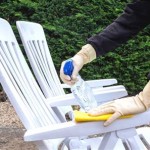Wood Patio Pavers: A Natural and Beautiful Choice for Outdoor Living Spaces
Wood patio pavers offer a natural and elegant alternative to traditional concrete or stone pavers. These durable and aesthetically pleasing materials bring a warm, inviting ambiance to any outdoor space, seamlessly blending with the surrounding environment. Whether you are creating a cozy patio, a spacious deck, or a relaxing walkway, wood pavers provide both functionality and visual appeal.
Natural Beauty and Warmth
Wood patio pavers provide a distinct natural charm that complements various landscaping styles. The rich grain patterns and colors of different wood species create a visually appealing and welcoming atmosphere. The warm tones of wood harmonize beautifully with greenery, flowers, and other natural elements, creating a cohesive and aesthetically pleasing outdoor living space. Furthermore, the natural texture of wood provides a comfortable surface for bare feet, enhancing relaxation and enjoyment.
Durability and Longevity
While wood is naturally susceptible to decay and insect damage, modern wood patio pavers are engineered for durability and longevity. Many manufacturers utilize pressure-treated wood, which undergoes a process that infuses the wood with preservatives, effectively protecting it against rot, decay, and insects. Additionally, some wood pavers are crafted from tropical hardwoods known for their exceptional strength and resistance to weathering. To further enhance durability, these pavers often feature a protective sealant that minimizes moisture absorption and prevents staining.
Versatile Applications and Designs
Wood patio pavers are highly versatile and can be used in various outdoor applications. They are ideal for creating patios, decks, walkways, and even garden pathways. The modular nature of wood pavers allows for flexible design possibilities, enabling homeowners to customize their outdoor spaces according to their preferences. Square, rectangular, or irregular shapes can be combined to create unique patterns and layouts. Pavers can also be used in combination with other materials, such as stone, gravel, or decorative plants, to enhance visual interest and create distinct focal points.
Installation and Maintenance
Installing wood patio pavers is relatively straightforward and can be completed by homeowners with basic DIY skills. The process involves preparing the ground, laying a bed of gravel or sand, and then carefully setting the pavers in place. Depending on the chosen wood species and the installation method, a sealant or protective finish may be applied after installation to enhance durability and longevity. Routine maintenance of wood patio pavers typically involves sweeping away debris, cleaning with a mild detergent, and reapplying a sealant every few years to protect the wood from moisture and weathering.
Choosing the Right Wood Species
The selection of wood species for patio pavers is crucial for ensuring durability and aesthetic appeal. Some popular choices include:
- Ipe: A dense and durable tropical hardwood known for its exceptional strength and resistance to weathering. Ipe is highly resistant to decay and insect damage, making it an excellent choice for long-lasting outdoor applications.
- Teak: Another tropical hardwood known for its natural oils that provide inherent resistance to moisture and decay. Teak is renowned for its rich golden color and natural patina, which develops over time.
- Cedar: A naturally durable and aromatic wood that is known for its resistance to insects and decay. Cedar is often used in outdoor applications due to its natural oils that repel insects and provide a pleasant fragrance.
- Pressure-Treated Pine: A cost-effective option that undergoes a pressure treatment process to improve its resistance to rot, decay, and insects. Pressure-treated pine is a good choice for budget-conscious homeowners, but it may require more frequent maintenance.
When selecting wood species, consider the desired level of durability, aesthetics, and budget. Researching the characteristics of different wood species and consulting with a knowledgeable professional can help homeowners make an informed decision that best suits their needs.
Environmental Considerations
Wood patio pavers offer environmental benefits compared to traditional concrete or stone pavers. Wood is a renewable resource, and sustainably harvested wood species contribute to environmental conservation. The use of recycled wood in paver production also promotes sustainability. Wood pavers are also permeable, allowing rainwater to infiltrate the ground, reducing runoff and supporting healthy soil conditions.
Conclusion
Wood patio pavers provide a natural and elegant solution for creating beautiful and functional outdoor living spaces. Their durability, versatility, and environmental benefits make them an attractive option for homeowners seeking to enhance their outdoor spaces with a touch of natural beauty.

Interlocking Ipe Wood Deck Tiles From Arrak Quick And Easy To Install

Interlocking Ipe Wood Deck Tiles From Arrak Quick And Easy To Install

Yaheetech 27pcs Fir Wooden Floor Tiles Patio Pavers Composite Decking For Outdoor Indoor Garden Deck Poolside 12 X Natural Wood Com

Deck Tiles Ipe Decking

Eco Exotic Wood Interlocking Deck Tiles For Your Outdoor Space In Toronto

Btmway 1 Ft X Square Interlocking Acacia Wood Quick Patio Deck Tile Outdoor Checker Pattern Flooring 10 Per Box Cxxbn Gi33346w685 Tile01 The Home Depot

Wood Pavers For The Patio Proflow Paver

Should You Install Composite Decking Or Patio Pavers Newtechwood

Interlocking Ipe Wood Deck Tiles From Arrak Quick And Easy To Install

Paver Patio Vs Wood Deck Which Is Best For You American Landscape








